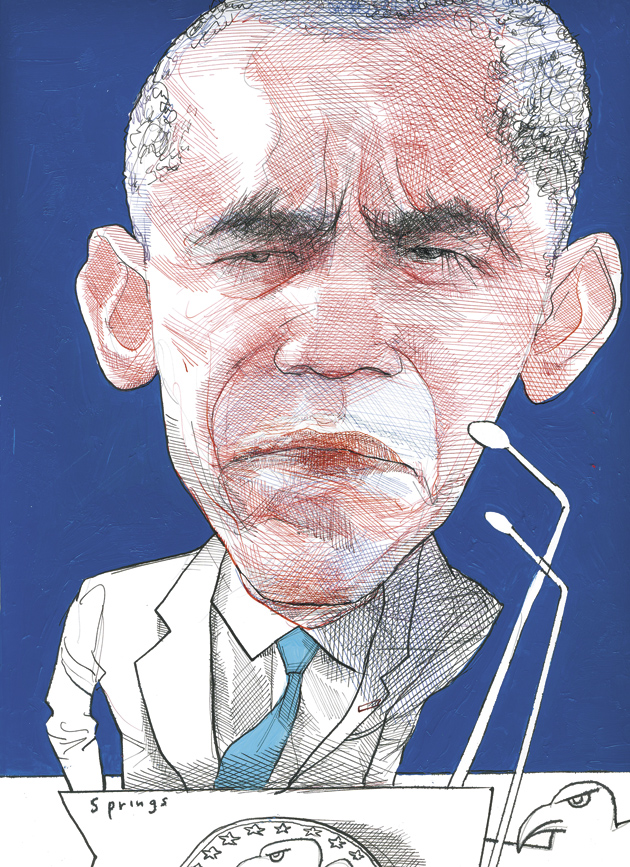Conflict between the United States and China dominated the meeting of the IMF on October 9 and 10. The United States was pressing China to revalue the renminbi upward while China was blaming the turmoil in currency markets on the United States policy of providing cheap credit. When Brazil’s finance minister spoke of an imminent currency war he was not far off the mark. China and the US were talking past each other but it would have been better if they had listened to each other because both sides were making valid points. Both China and the US, and the global economy as a whole, would fare much better if both sides accepted the other side’s recommendation.
The rest of the world echoed the American viewpoint—that China has been undervaluing its currency to help its export-driven economy—with greater or lesser stridency. Faced with opposition from developing countries, China is likely to yield and the renminbi will appreciate; only the pace and extent of the move is in question. But China’s viewpoint is also valid: the US ought to apply fiscal stimulus—i.e., more government spending—rather than monetary stimulus. Unfortunately the Obama administration is not in a position to do so because it is under domestic political pressure to hold down the deficit.
The Republican opposition has been highly successful in turning “stimulus” and “bailout” into dirty words that cannot be used. The opposition narrative blames the crash of 2008 and the subsequent recession and persistent high unemployment on the ineptitude of government and claims that the 2009 stimulus package was largely wasted. There is an element of truth in this interpretation but it is far too one-sided. The crash of 2008 was primarily a failure of the financial markets and the fault of the regulators was that they failed to regulate.
Without a bailout, the banking system would have stayed paralyzed and the recession would have been much deeper and longer. It is true that the stimulus was largely wasted in the sense that most of it went to sustain consumption but that was owing to time pressure. What the government had to do in the short run—keep the economy from collapsing—was the exact opposite of what was needed in the long run—correct the underlying imbalances, particularly between consumption and investment. Confining the initial stimulus to government investment would not have worked because it would have been too slow.
Where the Obama administration did go wrong, in my opinion, was in the way it bailed out the banking system. It helped the banks make their way out of a hole by supplying them with cheap money and relieving them of some of their bad assets. This was a purely political decision: on a strictly economic calculation it would have been better to inject new equity into the balance sheets of the banks. But this would have given the government effective control of a large part of the banking system. The Obama administration considered that politically unacceptable because it would have been called nationalization and socialism.
The decision to bail out the banks without exerting government control over their balance sheets backfired and caused a serious political backlash. The public saw the banks earning bumper profits and paying large bonuses while private citizens were badly squeezed by the interest rates on their credit cards jumping, in some cases, from 8 percent to nearly 30 percent. That was a major source of the resentment that the Tea Party movement exploited so successfully. In addition, the administration had invoked the so-called “confidence multiplier”: the idea that by inspiring confidence—for example through stimulus measures—consumers can be encouraged to spend and companies to invest and hire employees. When reality did not live up to the government’s promises and unemployment failed to fall, confidence turned to disappointment.
The Obama administration is now on the defensive. The Republicans are campaigning against any further stimulus and they seem to have gained the upper hand by stigmatizing big government. The administration feels that it has to pay lip service to fiscal rectitude even as it recognizes that the timing is premature for restricting government spending.
The imbalances that were at the root of the crash of 2008 remain to be corrected and the private sector is unable to do it on its own. The US still consumes more than it produces, running a chronic trade deficit. Consumption is too high at nearly 70 percent of GDP, compared to an unsustainably low 35.6 percent for China. Households are overindebted and need to increase their savings rates. The US economy badly needs investments that enhance productivity but the private sector is unwilling or unable to provide them. US corporations operate very profitably but instead of investing their profits they are building up their liquidity—accumulating money, not investing it. In these circumstances there is a strong case for government intervention. Admittedly, consumption cannot be sustained indefinitely by running up the national debt. But to cut back on government spending at a time of large-scale unemployment would ignore all the lessons learned from the Great Depression.
Advertisement
The obvious solution is to draw a distinction in the budget between investments and current consumption and to provide additional stimulus for investments but not for consumption. Such a stimulus program coupled with a gradual appreciation of the renminbi would go a long way toward correcting the prevailing imbalances. Consumers would spend less on imported goods because they would cost more and corporations would find it more profitable to invest at home, creating more jobs. The trade deficit would shrink. Prices would move toward the inflation target of 2 percent, removing the threat of a deflationary spiral. The economy could start growing its way out of the prevailing imbalances.
China should find it in its own interest to contribute to this outcome by allowing the renminbi to appreciate, especially since that would also contribute to correcting its own internal imbalances which are the mirror image of the American ones. The US is threatened by deflation; China suffers from inflationary pressures. The US consumes too much, China too little. The US needs to cut its trade deficit, China its surplus.
These policies are more desirable than quantitative easing, which has negative side effects both at home and abroad. As Keynes famously observed, “you can’t push on a string”—quantitative easing is more likely to generate asset bubbles and currency turmoil than employment.
Unfortunately the Obama administration is pushed into the wrong policies by political pressures. A large majority of the population is convinced that the government is incapable of efficiently managing investments. Again, this belief is not without justification: a quarter of a century of calling the government bad has resulted in bad government. But the claim that government spending is inevitably wasted is patently false: the New Deal produced the Tennessee Valley Authority and the Triborough Bridge and other utilities that are still in use.
The anticipated Republican victory in the mid-term elections will virtually assure that the Bush tax cuts will be extended for a year or two in their entirety. That will render any further fiscal stimulus impossible because of the budget deficit. But the top 2 percent of the population will not use the additional income to generate employment but to build up its liquidity. So the common interest will be sacrificed to the special interest of the top 2 percent. This is truly tragic.
The question remains, how much room does the government have for fiscal stimulus if the Bush tax cuts are not extended for the top 2 percent? How much public debt is too much? The question does not have a hard and fast answer. In saying this I am not being evasive; on the contrary, I am making an important assertion. The tolerance for public debt is highly dependent on the participants’ perceptions and misconceptions. In other words it is reflexive and therefore indeterminate.
The debt burden is not an absolute amount but a ratio between the debt and the GDP. The higher the growth rate of the GDP, the smaller the burden represented by a given amount of debt. The other important variable is the interest rate: the higher the interest rate, the heavier the debt burden. In this context the risk premium attached to the interest rate—i.e., the extra interest above the risk-free rate—is particularly important: once it starts rising, the prevailing rate of deficit financing eventually becomes unsustainable and needs to be reined in. Exactly where the tipping point at which government bonds cease to be riskless is difficult to determine because it depends on prevailing misconceptions.
The idea that we must cut the budget deficit at a time of high unemployment is such a misconception. Admittedly, it would be unsound for the US to preserve current imbalances by accumulating government debt indefinitely. Once the economy starts growing again interest rates will rise and if the accumulated debt is too big it may rise precipitously, choking off the recovery. But premature fiscal tightening is worse because it is liable to choke off the recovery prematurely.
The right policy is to reduce the imbalances as quickly as possible. This can be done in a number of ways, but cutting the budget deficit in half by 2013 while the economy is operating far below capacity is not one of them. Investing in infrastructure and education makes more sense. So does engineering a moderate rate of inflation by depreciating the dollar against the renminbi. What stands in the way is the misconception that budget deficits must be reduced to help the economy recover, a notion that has been exploited for partisan political purposes. There is a real danger that the premature pursuit of fiscal rectitude may wreck the recovery.
Advertisement
—October 14, 2010,
This Issue
November 11, 2010




